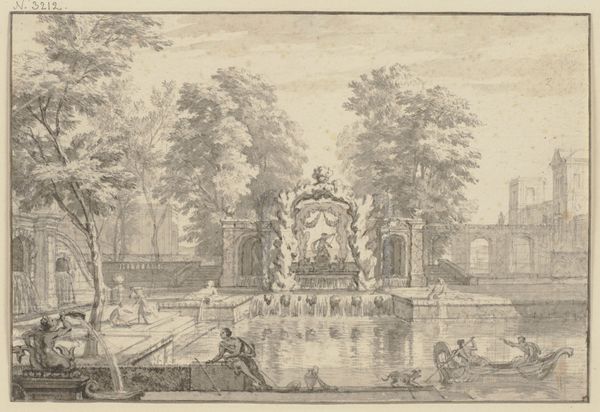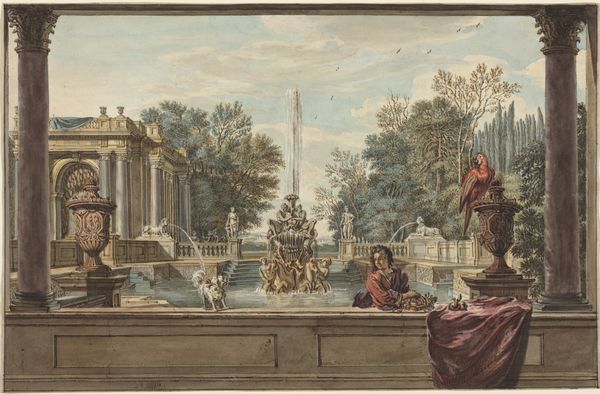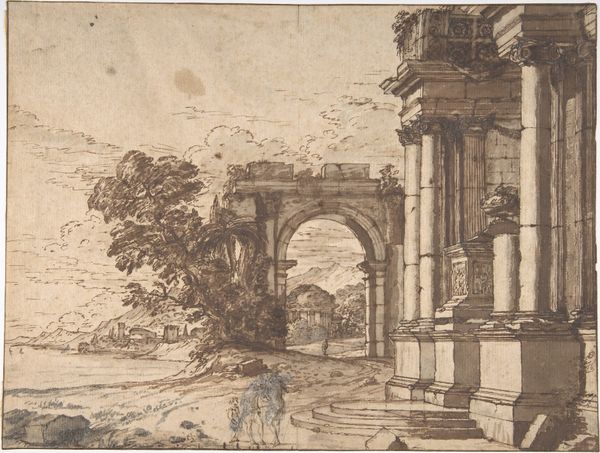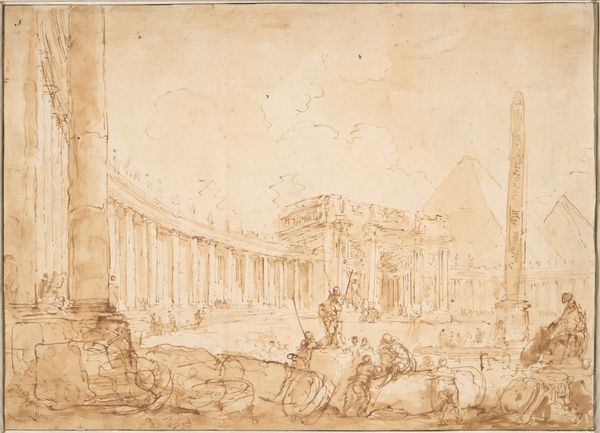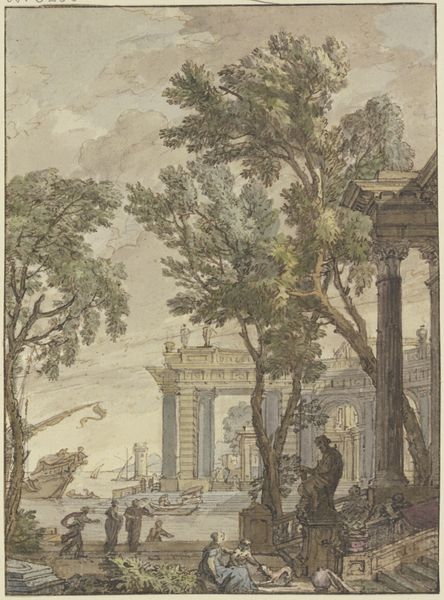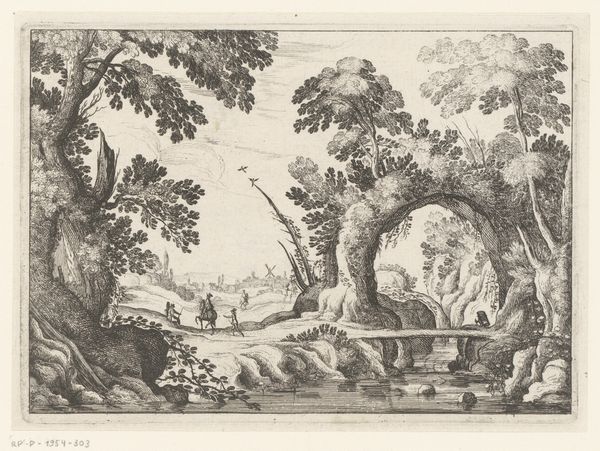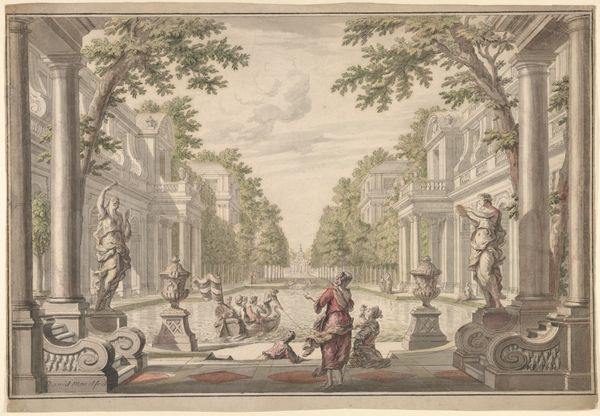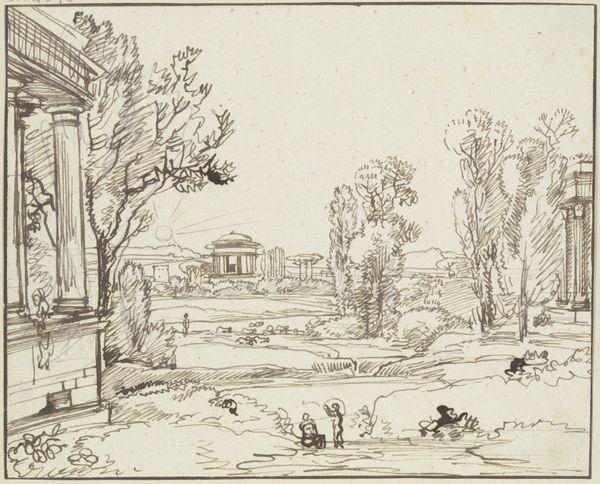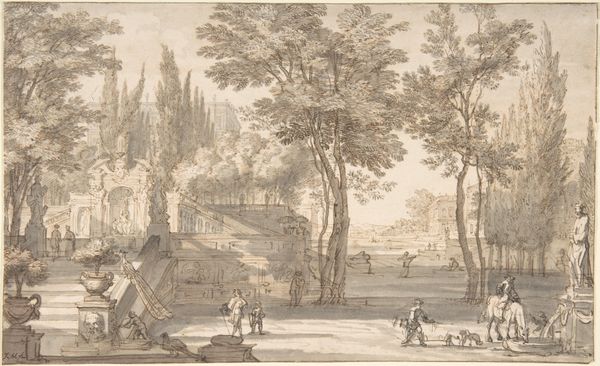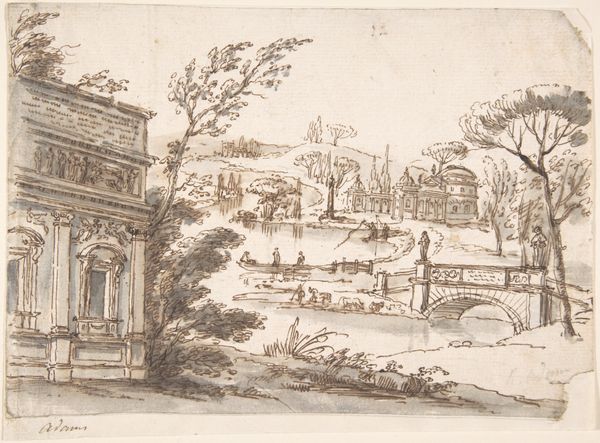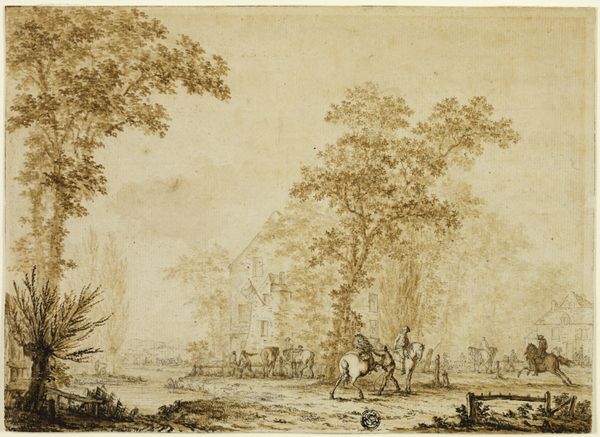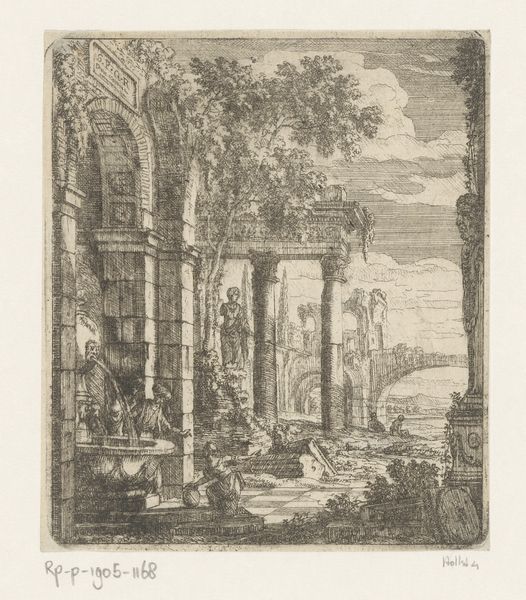
drawing, watercolor, ink
#
drawing
#
baroque
#
ink painting
#
landscape
#
oil painting
#
watercolor
#
ink
#
coloured pencil
#
cityscape
Dimensions: overall: 17.4 x 21.3 cm (6 7/8 x 8 3/8 in.)
Copyright: National Gallery of Art: CC0 1.0
Curator: This ink and watercolor drawing is entitled “Capriccio with a Palladian Villa,” created around 1760 by Mauro Antonio Tesi. Editor: It evokes a tranquil, almost melancholic atmosphere, doesn’t it? The brown monochrome lends a subdued, dreamlike quality. The composition emphasizes perspective lines which point us towards an unknown depth in the background. Curator: Tesi, as a key figure in the Roman art scene, engaged deeply with the Grand Tour and its impact on artistic production. He certainly tailored his picturesque views like this to appeal to aristocratic tastes seeking souvenirs of Italy. Editor: Notice how he positions the viewer’s eye? Framed on either side by mature trees, with classical statuary at each edge, guiding us centrally between them, to observe architecture behind groupings of individuals. I also admire his handling of the medium; transparent layers adding tone to the image which create shadow without heaviness. Curator: Absolutely. This type of idealized cityscape wasn’t just about aesthetics; it was a statement about power, lineage, and the enduring influence of classical ideals on 18th-century society, particularly during an era where cities became displays of societal progress. The carefully staged views, the Palladian villa – it’s all carefully crafted to project a certain image of sophistication and cultural authority. Editor: It is striking how Tesi combined realism with fantasy through an approach emphasizing symmetry; the architecture and greenery conform beautifully, adding weight to themes such as order versus nature. The statuary almost acts as symbolic guides placed perfectly along our journey through imagined places within its frame. Curator: By presenting such structured idyllic scenery, he subtly reinforced the status quo. It wasn't just about pretty pictures. This served an ideological function – cementing ideas about social order among elites during periods characterized by turbulence. Editor: Well, whichever way it served them socially, technically, its mastery resides precisely in the way simple tools yield so much in depth and atmospheric effect here. It creates within something concrete such immense scope from simple tonal shifts achieved delicately across these laid paper surfaces. Curator: Indeed. Understanding artwork like this allows understanding about complex intersections relating arts impact to contemporaneous cultural and sociopolitical settings where they originated. Editor: A rewarding glimpse then, I would say into artistic innovation at work.
Comments
No comments
Be the first to comment and join the conversation on the ultimate creative platform.
